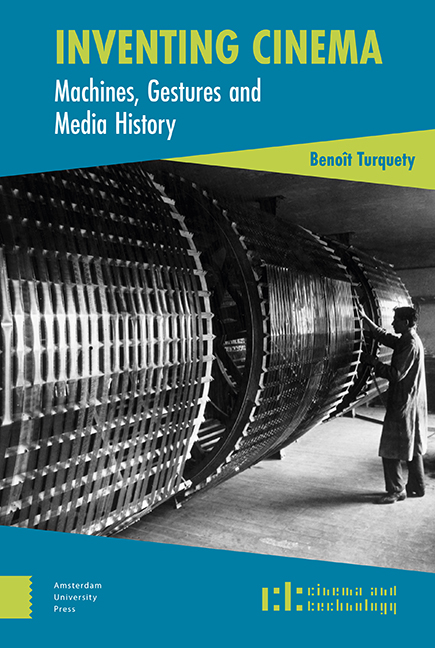Book contents
- Frontmatter
- Dedication
- Contents
- Acknowledgements
- Introduction: The Problems of Digital Cinema
- 1 The Why and How of Machines
- 2 Invention, Innovation, History
- 3 The Invention of the Problem
- 4 The Invention of the Cinématographe
- 5 ‘Natural Colour Kinematography’, a New Cinema Invention : Kinemacolor, Technical Network and Commercial Policies
- 6 Epilogue: From the Trembling of Film to the Stability of the Digital
- Bibliography
- Index
5 - ‘Natural Colour Kinematography’, a New Cinema Invention : Kinemacolor, Technical Network and Commercial Policies
Published online by Cambridge University Press: 21 November 2020
- Frontmatter
- Dedication
- Contents
- Acknowledgements
- Introduction: The Problems of Digital Cinema
- 1 The Why and How of Machines
- 2 Invention, Innovation, History
- 3 The Invention of the Problem
- 4 The Invention of the Cinématographe
- 5 ‘Natural Colour Kinematography’, a New Cinema Invention : Kinemacolor, Technical Network and Commercial Policies
- 6 Epilogue: From the Trembling of Film to the Stability of the Digital
- Bibliography
- Index
Summary
Abstract
Kinemacolor, the first commercially exploited ‘natural colour’ process, has often been considered as a step in the wrong direction for colour cinema. But it was an extraordinarily coherent system, based on a mechanical apparatus and involving a whole conception of what cinema was, what it should be, how it should be done and sold, and what was to be its place within culture. Moreover, the characteristics of the process involved highly original perceptual traits that are of major theoretical interest today. Technically invented by George Albert Smith, it was its promoter Charles Urban that gave it its real coherence. For Urban, Kinemacolor was conceived as a true reinvention of cinema. Cinema thus never ceases to be confronted with reinvention projects.
Keywords: Kinemacolor, Charles Urban, George Albert Smith, technical network, colour cinema, film technology.
In the introduction to his doctoral dissertation on ‘the conquest of the snapshot’, the photography historian André Gunthert writes:
Any photographic image, the product of technique, contains an ensemble of information about the operational modalities which presided over its creation: an iconic document offered up for aesthetic reading, it is also a technological monument capable of becoming the subject of an archaeological interrogation.
This ‘also’ is tied up with a shift: the attention to the technological, to its traces in the image, transforms our gaze and has us move to the ar-chaeological level. But this passage involves taking non-verbal elements into account: images, devices, diagrams, graphics, etc. Pierre Francastel, in his article ‘Valeurs sociologiques de l’espace-temps figuratif’, clearly demonstrated the importance of these non-verbal sources, and yet they create methodological problems as part of an archaeology: how (and of what) can they make an archive? It was questions of this sort that led Michel Foucault to pass from an archaeology based on discourses to an epistemology that takes dispositifs into account. I would like to give an example, using a concrete object, to illustrate these questions, one sometimes mentioned by archivists because of the singular problems it poses: the first cinematic natural colour process marketed commercially, Kinemacolor.
This process was invented in 1906 in England by George Albert Smith and was financed and marketed by Charles Urban until 1915.
- Type
- Chapter
- Information
- Inventing CinemaMachines, Gestures and Media History, pp. 209 - 230Publisher: Amsterdam University PressPrint publication year: 2019



